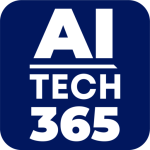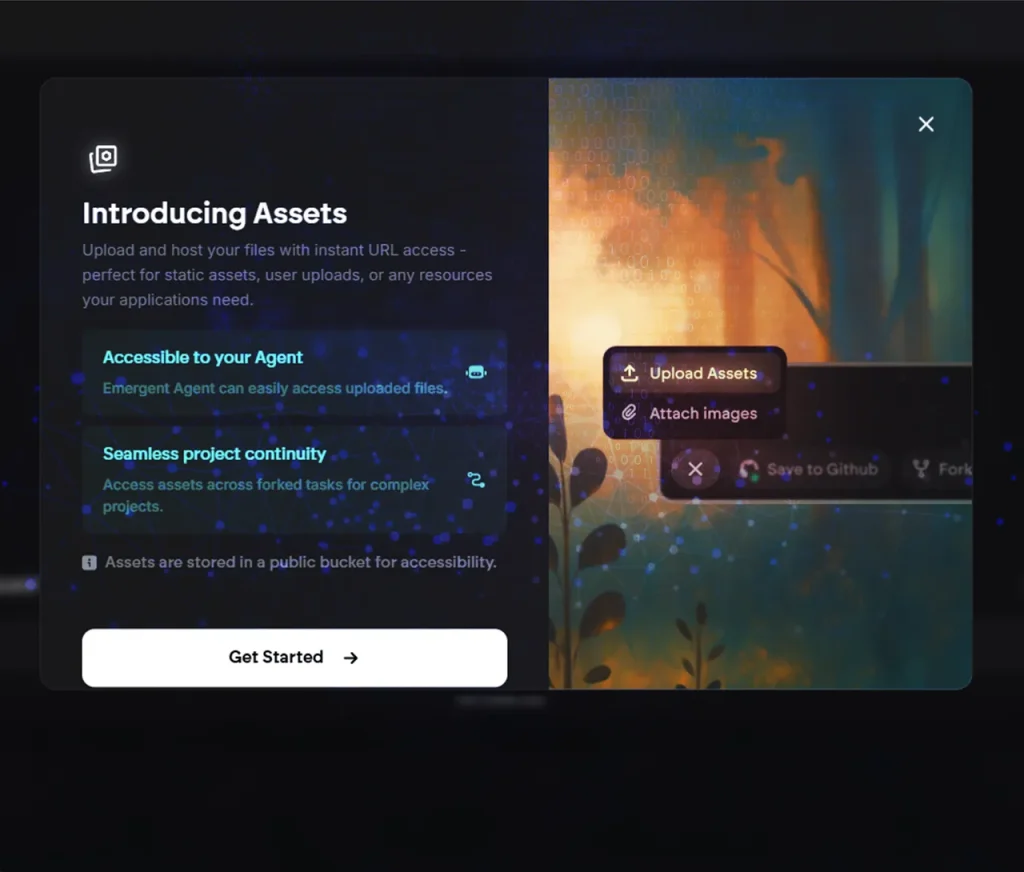The relentless pace of AI innovation presents a paradoxical challenge for tech leaders. Vision is everywhere. However, turning that vision into practical AI applications is often a challenge. This complexity can slow down progress. Traditional coding requires a lot of technical skill. Even with basic AI helpers, it still needs careful planning. You also have to manage the infrastructure. What if making AI felt more like a chat instead of a struggle with code and servers? Introducing Emergent.sh. It’s not just another coding tool. It’s the world’s first Agentic Vibe-Coding Platform. This platform promises a big change in how we create AI.
What Emergent.sh Actually Is
Forget rigid IDEs and fragmented development pipelines. Emergent.sh represents a fundamentally new paradigm: agentic vibe-coding. It’s a platform that turns human intent into working AI applications. This happens through conversations and context. A team of specialized AI agents makes it all possible. The ‘vibe’ signifies the shift from painstaking, line-by-line instruction to high-level, outcome-focused collaboration. Think of it as briefing a skilled team on what you want. They will then execute your vision smartly and adaptively, needing little micromanagement.
You need a customer sentiment analysis dashboard. It should pull real-time data from social media APIs. Then, it will use specific NLP models to process this data. Next, it will visualize trends and alert your team about critical spikes. You don’t need weeks of coding, integrating, or debugging. You can express this vision easily with Emergent.sh. The platform’s agentic system takes charge. It handles code generation, service selection, workflow orchestration, and deployment details. The result isn’t just code; it’s a live, functioning application, born from your ‘vibe.’
What Sets Emergent.sh Apart
Emergent.sh is groundbreaking because of three key pillars. Each one moves away from traditional development tools.
- Conversational Interface: Your Vision, Your Voice: Traditional programming languages are strict. But now, you can use natural language. You interact with Emergent.sh via a simple chat. You describe your goals, share context, refine requirements, and ask questions. It feels like talking to a skilled colleague. This isn’t merely a chatbot tacked onto a code editor; it’s the primary control mechanism. You explain the what and the why. You share the desired functionality, business logic, and user experience. But you don’t say how to achieve it. The platform gets nuance and asks questions when needed. It lets you make changes on the fly based on its suggestions or partial outputs. It makes it much easier to come up with ideas and details. Now, even those who aren’t deep coding experts can access advanced AI development.
- Agentic Workflow: Your Autonomous AI Team: This is where the magic truly unfolds. Emergent.sh employs a sophisticated ecosystem of specialized AI agents working collaboratively. Think of them as your dedicated digital engineering squad:
- The Architect: Translates your conversational input into a high-level technical blueprint.
- The Coder: Creates clean and functional code modules from the blueprint. It picks the right languages and libraries.
- The Integrator: Seamlessly stitches together APIs, data sources, and pre-built AI services.
- The QA Engineer: Proactively tests components, identifies potential edge cases, and suggests improvements.
- The DevOps Specialist: Handles containerization, infrastructure provisioning, and deployment pipelines.
Critically, these agents operate with significant autonomy. They don’t just wait for instructions. They think about the best way to move forward. They suggest solutions, manage dependencies, and solve everyday problems on their own. You stay in control. You offer high-level guidance and approvals. But you are free from the details. This teamwork manages the complexity of modern AI stacks better than a basic human-led process. Moreover, Agentic AI is already delivering 48% faster product development cycles in hardware startups. Also, in enterprise environments, 62% of organizations expect ROI of over 100% from agentic AI, averaging a 171% ROI overall.
- End-to-End Deployment: From Conversation to Cloud: Emergent.sh bridges the gap between development and operations. The platform doesn’t stop at generating code. Its agents manage the entire deployment lifecycle. After discussion and teamwork solidify the application logic, the platform automatically:
- Provisions the necessary cloud infrastructure (compute, storage, networking).
- Configures containers or serverless environments.
- Sets up CI/CD pipelines for updates.
- Deploys the application to a live environment.
- Monitors performance and can even suggest scaling adjustments.
This ‘concept to production’ capability within a single platform is unprecedented. It cuts out many manual steps, fixes setup issues, and speeds up deployments. This allows AI tech leaders to focus on innovation and value. They no longer have to worry about infrastructure issues.
Why ‘Agentic’ Isn’t Just a Buzzword
The shift to agentic development isn’t merely incremental; it’s transformative for AI teams. Traditional AI assistants can autocomplete lines or suggest functions. However, they don’t have the contextual understanding or collaborative reasoning of real agents. They also lack end-to-end responsibility. Emergent.sh‘s agents embody proactivity and ownership. They identify needs, address sub-problems on their own, and make sure the final result matches the original intent. This translates into tangible benefits:
- Unmatched Speed: Development cycles now take only days or hours instead of months or weeks for complex prototypes and MVPs.
- Easier Technical Access: Domain experts and product managers can now help create applications. This links their ideas directly to implementation.
- Less Complexity for Developers: They can skip the tricky setup and boilerplate. This lets them focus on innovation and their unique ideas.
- Improved Strength: Agentic QA and integration cut down on bugs and misconfigurations from manual processes.
- Optimized Resource Utilization: Automated, intelligent deployment ensures efficient use of cloud resources.
Moreover, agentic workflows have been shown to reduce manual errors by 67% and improve process efficiency by 51% in enterprise settings.
Also Read: How Cursor Is Reimagining the Developer Experience with Natural Language Edits
Navigating the Emergent.sh Revolution
For AI leaders seeing vibe-coding for the first time, it’s important to grasp its unique approach. Here’s how Emergent.sh fundamentally differs:
- Starting Point: Forget empty code files. You start with a conversation about the problem and the desired solution. Articulate the goal, the data involved, the desired user interactions, and any constraints. Be as descriptive as you would while briefing a human team.
- The Collaboration Rhythm: Interaction is iterative and dynamic. The agents will share options and ask for clarification. For example, they might say, “Should we focus on speed or cost for this data processing step?” They will also suggest other methods. Your role shifts from coder to visionary director and reviewer.
- Trusting the Process: Embrace the autonomy. Let the agents manage the implementation details unless certain technical choices are crucial. Focus on validating the output and ensuring alignment with the business objective.
- Leveraging the End-to-End Flow: Utilize the deployment automation as a core feature. Define your target environment early in the conversation. Seeing your idea turn into a working app without manual deployment scripts is key to its value.
- Iterative Refinement: The conversational interface makes adjustments easy. Need to change a reporting metric or integrate a new data source? Continue the conversation; the agents will handle the ripple effects.
Real-World Resonance
Consider a financial services firm needing real-time fraud detection. This usually means bringing a team together. They will build models. They will integrate transaction feeds. They will create alert logic. Then, they will deploy a scalable backend.
With Emergent.sh, a product manager has a clear goal: ‘Analyze incoming payment transactions in real-time.’
- Flag transactions over US$ 10,000 that occur in a different country from the user’s home. This should happen within 2 hours of login, using our fraud model X.
- Send high-confidence alerts to the security ops Slack channel.
- Also, log all analyzed transactions.
The agentic system will manage complex event streaming, model invocation, and logic implementation. It will also integrate with Slack and deploy to a scalable cloud environment. This means it can deliver a working prototype much faster.
The Agentic Imperative
Emergent.sh isn’t just a tool; it’s a harbinger of the future of software and AI development. As AI systems improve, human developers will shift more towards strategic roles. They will focus on ethical oversight and defining creative problems. Platforms like Emergent.sh lead in agentic teamwork and vibe-based creation. They promise to make advanced AI development accessible. They aim to speed up innovation like never before. This allows human minds to tackle complex and visionary challenges.
The Bottom Line for AI Tech Leaders
Emergent.sh offers more than efficiency in a world that craves innovation. It brings a major change in capability. Tech leaders can boost productivity by using agentic vibe-coding. This approach helps teams contribute to AI solutions. It also speeds up the process from idea to effective application. It challenges the status quo of development complexity. The question isn’t if agentic platforms are the future. It’s if your organization is ready to lead it. Using Emergent.sh isn’t just about a new tool; it’s about placing your team at the forefront of AI’s future. The conversation starts now. What will you create?

